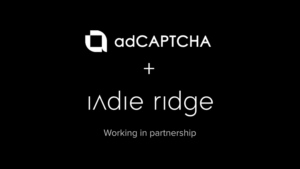TV is dead. It’s been dying for years and the future of TV is increasingly on our phones. That’s the common narrative but the reality is anything but according to Tal Chalozin, co-founder and CTO of connected TV and video advertising platform Innovid.
Chalozin invited delegates at MadFest London 2019 to sort the “bullshit” from the “epic shit” in a talk entitled ‘The future of TV: 5 predictions’.
Far from technology and innovation being the breaking of TV, it will be the making of it in coming years, he said, urging people to think again about the role of content and the way it is delivered.
“It is bullshit that Neflix reinvented TV,” he said. “Innovation that people attribute to changes in different mediums is mostly around the technology that delivers the content and not the content itself.”
For instance, Instagram with photos, Spotify around audio and streaming services such as Netflix in the ‘TV’ space.
The biggest misconception was that the small screen will be the main screen. “Bullshit,” he said again. In fact, the big screen, delivered via digital broadcasts, streaming, OTT and other smart technologies, will only grow in prominence.
“Even YouTube says that its biggest opportunity is through the TV set, and that it is now its fastest-growing device,” he added.
However, the idea that we’ll say goodbye to the ratings panel system, such as the UK’s Barb, is “epic shit”. He pointed to existing technology such as automatic content recognition that is increasingly installed on many smart TVs — it can recognise the content being played on a device, however it is delivered.
“In five years time every home will have this technology. We will not need to rely on the old Barb-style panel measurement box in just a few households. We will have census data not panel data.
Meanwhile, GDPR won’t stop the personalisation of TV ads, he said, citing examples such as a recent Boots commercial that was GDPR compliant. Personalisation could be targeted to times of day, weather and other triggers, for instance.
People don’t hate ads
The fourth myth he presented was that people hated ads: not true, they hate bad ads, he said, and recognise and value the quid pro quo that advertising brings. An example was the popularity of the cheaper, ad-funded Hulu service over its more expensive ad-free version.
Finally, forget thinking TV is a lean-back experience alone. People can and do engage with television advertising as a recent CBS trial during the Superbowl showed. It ran an interactive digital ad for Pringles, which resulted in 4,200 creative versions and a 6.4% engagement rate.
“TV is everywhere,” said Chalozin, albeit fragmented. “It allows you to megaphone a message and it also allows you to dial up engagement. There is interaction, there is personalisation, [it is becoming] data-driven. TV is coming to the internet — this is amazing, the places we can go and the technology we create.”











